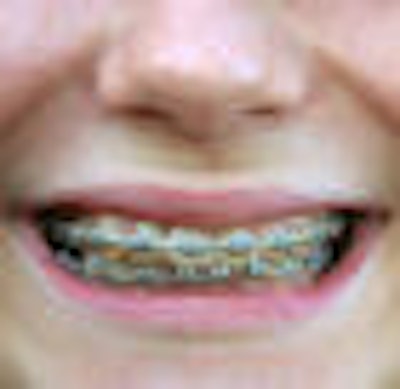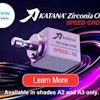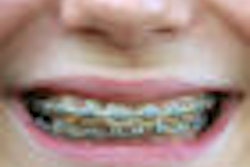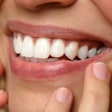
The consumption of sugary sodas has contributed to frustrating treatment results in orthodontics for years. Now an in vivo study has found that resin infiltration treatment can yield better bond strengths in metal brackets even with regular exposure to Coca-Cola and Sprite (Angle Orthodontist, January, 11, 2013).
Researchers from the Faculty of Dentistry at Mansoura University in Egypt compared the effects of two popular carbonated soft drinks, Coca-Cola and Sprite, on shear bond strengths of metal orthodontic brackets with and without resin infiltration treatment, and found that "pretreatment with the infiltrating resin has proved to result in a significant improvement in shear bond strength, regardless of the type of soft drink consumed."
The consumption of sugary, carbonated beverages appears to be trending downward, but annual consumption among Americans is still shockingly high. The per capita annual carbonated soft drink consumption in the U.S. was 44.7 gallons in 2010, down from 51.5 gallons in 2005, according to figures released by Beverage Marketing. And New York City has famously banned servings of sweetened soft drinks larger than 16 ounces.
While the amount varies from person to person, soda consumption can wreak havoc on treatment plans. "Studies using scanning electron microscopy (SEM) have shown that soft drinks produce large areas of enamel decalcification," the Mansoura University researchers wrote. The breakdown of enamel soon follows.
Their study was inspired in part by a new approach for treating noncavitated caries lesions: an infiltration technique that utilizes low-viscosity, light-curing resins. "In contrast to the conventional sealing concept ... caries infiltrants penetrate the porous body of initial caries lesions," the researchers explained.
Clinical studies they looked at concluded that the technique is more effective at halting the progression of caries than fluoride within the first year and a half that it is observed. "A recent study confirmed that the microinvasive therapy of caries by resin infiltration facilitates an early, virtually painless aesthetic treatment and masking of postorthodontic white-spot lesions on the enamel surface," they wrote.
With reported success in other areas, the researchers wanted to see if this technique could change the way acidic beverages affect the shear bonding strength of metal orthodontic brackets.
Rinsing with soda
For the study, they used 60 noncarious maxillary premolar teeth that were previously scheduled to be extracted from 30 patients between the ages of 12 and 17. The patients were separated at random into two groups corresponding to the two beverages being tested: Coca-Cola, which has a pH of 2.44, and Sprite, which has a pH of 2.90. The resin infiltration (Icon, DMG) was applied to one side only of each group prior to bonding stainless steel premolar brackets (Victory series, 3M Unitek) to the teeth slated for extraction.
The brackets were applied to a tooth surface etched with 35% phosphoric acid gel for 30 seconds, washed, and primed with Transbond XT (3M Unitek) bracket luting system. After excess material was removed, a 60-second light cure was performed with an Epilar Freelight II LED (3M ESPE).
In the next phase, the participants were instructed to rinse their mouth with their assigned beverage, served at room temperature, for five minutes, three times a day, during a three-month period. They were also told not to drink any other acidic drinks and to brush three times daily for three minutes. After extraction, the 60 teeth were separated into four groups of 15: pretreated brackets with Coca-Cola and Sprite rinses (groups 1 and 2, respectively) and untreated brackets with Coca-Cola and Sprite rinses (groups 3 and 4, respectively).
Then the researchers mounted the teeth vertically in acrylic blocks to gauge their shear bond strength with a universal testing machine. They recorded the load at failure and calculated shear strength values. Subsequently, the amount of erosion was determined with a scanning electron microscope. Finally, the results were evaluated with a two-way analysis of variance test.
Coca-Cola harsher
The resin infiltration treatment had a noticeable effect, the researchers found. "A significant difference was observed between specimens of the Sprite group without Icon compared with those infiltrated with Icon (p< 0.0001)," they wrote. "There was also a significant difference in bond strength between specimens from the Coca-Cola group without Icon and those infiltrated with Icon (p < 0.0001), wherein the Icon-infiltrated specimens showed higher values."
Additionally, Coca-Cola appeared to be harsher on bond strength than Sprite in non-Icon pretreated specimens (p < 0.0001); in fact, the former had the weakest mean bond strength of all groups.
During the SEM examination, the researchers found evidence of healthier enamel surfaces to which Icon resin infiltration was applied before exposure to Coca-Cola and Sprite. In addition, "the enamel defects in the Coca-Cola group were more extensive and more noticeable than those in the Sprite group," they wrote.
Ultimately, the researchers were satisfied that their in vivo study confirmed previous conclusions of in vitro studies. Resin infiltration does indeed provide significantly improved bond strength, they concluded.



















